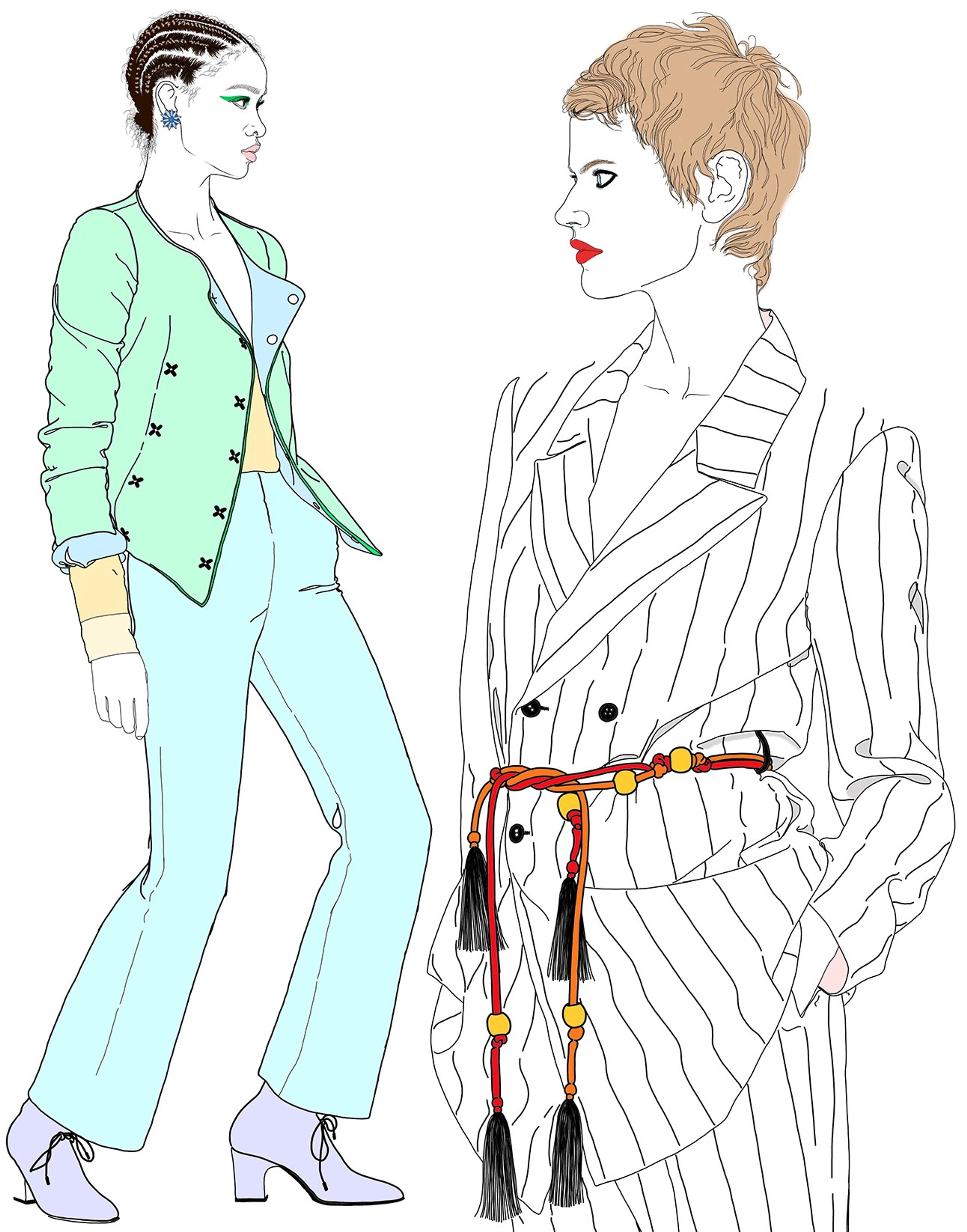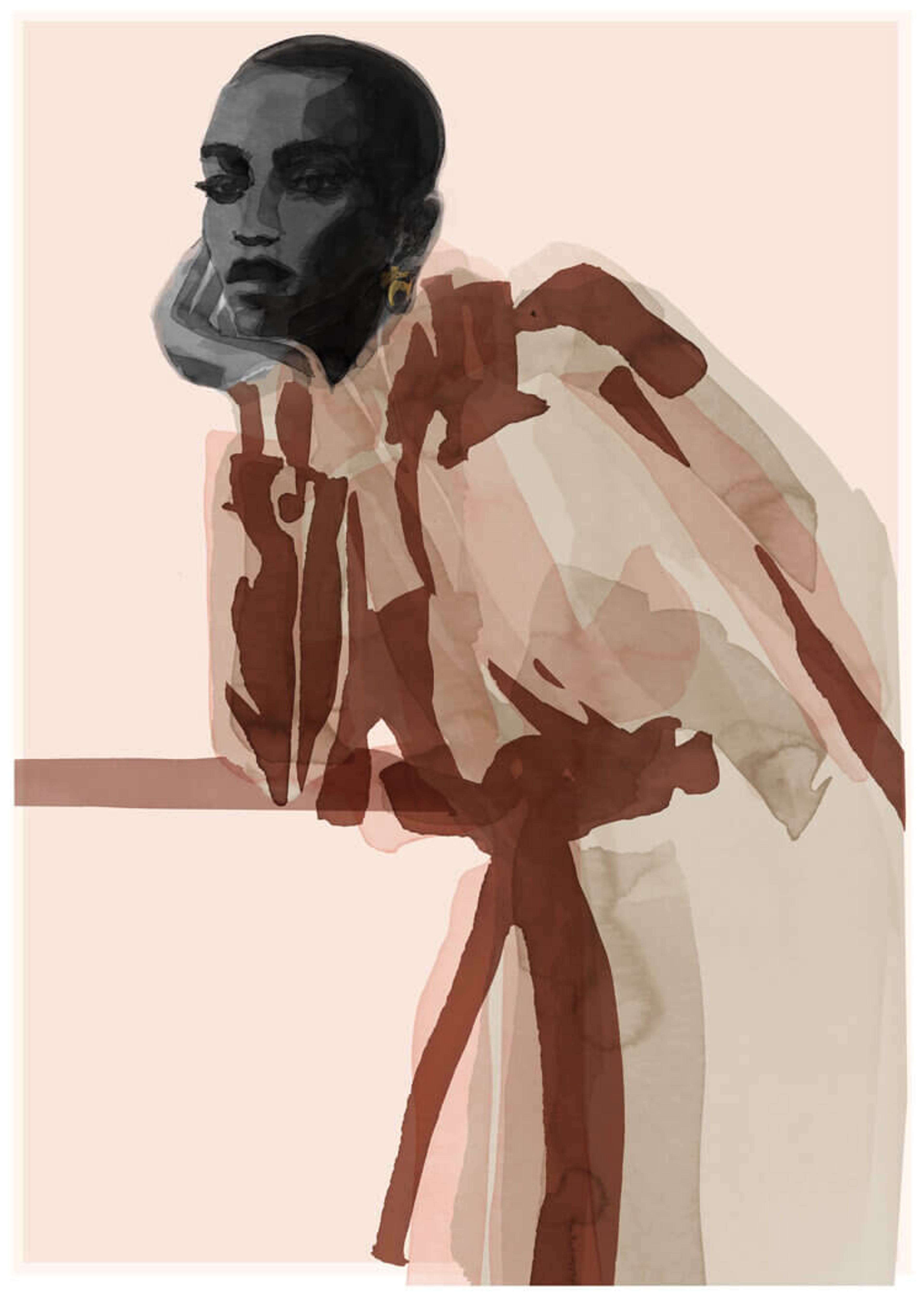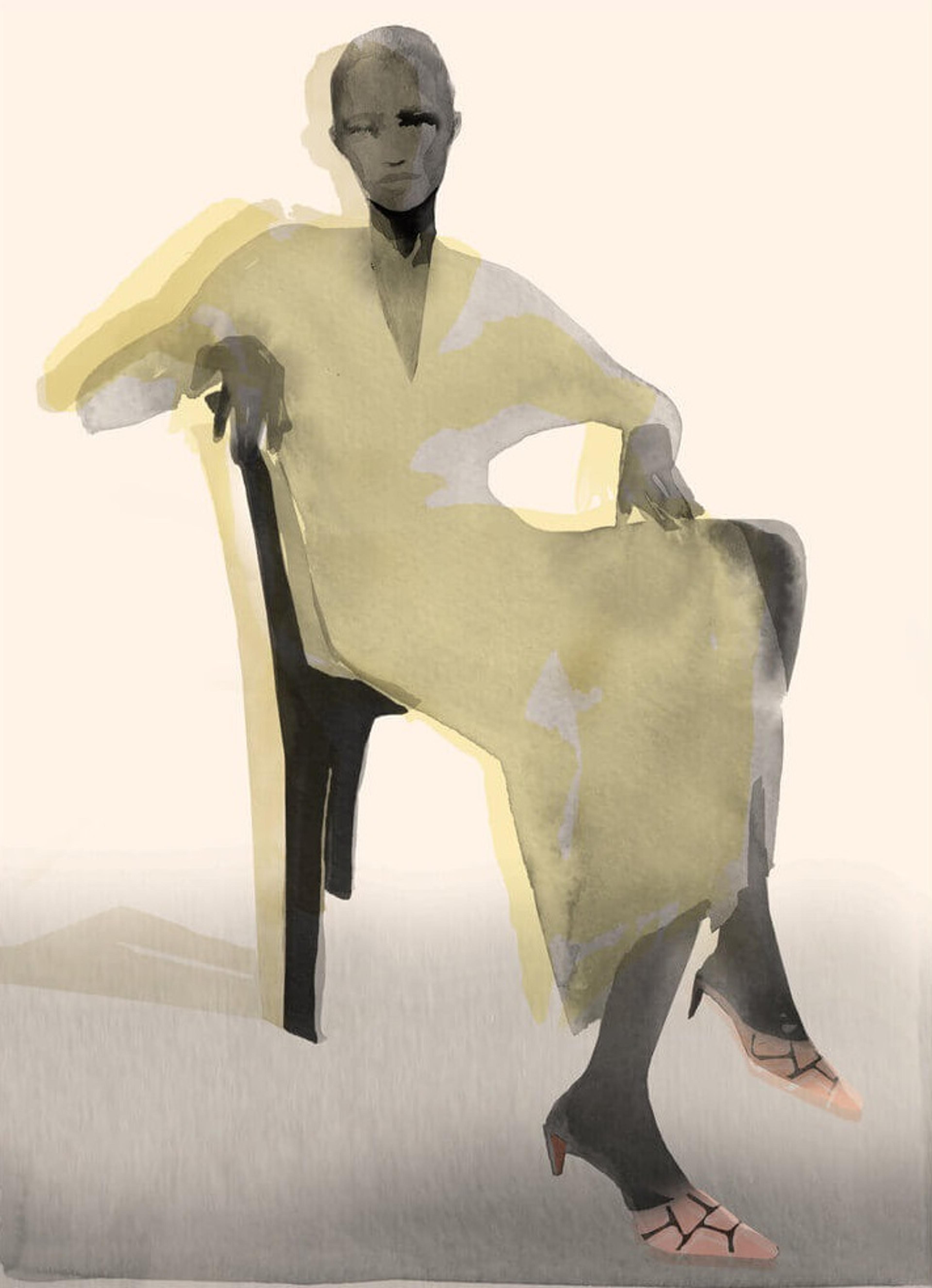A Q&A with fashion illustrators Montana Forbes and Joanna Layla
by Natasha Knight, The AOI
Ahead of London Fashion Week and our Industry Insight: Fashion Illustration event later this month, The AOI’s Natasha Knight talked to hosts Montana Forbes and Joanna Layla about style, shows, sustainability and diversity in the industry.
What does a day in the life of a fashion illustrator look like?
Montana: My day typically starts at 5:55am, checking emails for any enquiries or developments on current projects. During fashion weeks, planning out my outfit is paramount. It’s essential to feel comfortable and confident in what you’re wearing; I find that translates into my work.
My focus at fashion weeks is the individual styling of the attendees, the models, stylists and surrounding fashion crowd. I photograph people in and around the shows and source images online afterwards to use as references. I also browse through magazines that I’ve collected over the years. Then I allocate days to sketch out parts of outfits from different images to create new compositions.

Joanna: My day begins waking early and packing up my kit for the day – all the essentials for drawing live in any setting. [At runway shows] I normally work side of stage or backstage, so I need to set up quickly and use media appropriate for the space. When you have more room you can use a range of materials, but around garments or perched in a tiny space it can be useful to make small sketchbook drawings.
As quickly as possible I create warmup sketches of anyone or anything to ease into the show. Fashion week illustration is physical, gestural, fast and expressive - warming up really helps me perform at my best.
For the last few seasons, I have been artist in residence with Fashion Scout at London Fashion Week – spending the day with them at their shows drawing their programme of emerging designers. My favourite part is drawing backstage and capturing moments behind the scenes – it’s magical. There’s an electricity that is so exciting to be a part of. I love that I can capture that as a fashion illustrator – the speed of the show and the more intimate, introspective moments backstage.

London Fashion Week 2022 (LFW) is fast approaching. What advice would you give illustrators who are new to the industry?
Montana: Working long hours is sometimes par for the course, keeping abreast of fashion trends and being aware of established as well as new designers. Get to know your strengths: if you work at a fast pace then live events are avenues to explore. For longevity, cultivate and be confident in your own unique mark-making. Familiarise yourself with fashion industry terminology: it’ll come in handy in communications with commissioners. I highly recommend wandering the streets during LFW to soak up the atmosphere and creative scene. Try to attend some shows live too, it’s a special and exhilarating experience and you never know who might come across – possibly a new client or collaborator.
Joanna: LFW events can take lots of different forms – if you can’t get into the headline shows, there are a myriad of other popup events where you can get live drawing experience. There are normally be listings of popups for each fashion week – especially in London focused publications and websites. Contact organisers and see if they would like live drawing, or if you can attend their event. There are opportunities that may not appear obvious on the surface and they can provide a great way for you to build up your live portfolio. LFW is also accessible online now which has changed the game.

In terms of sustainability, what are the challenges for the fashion illustrators?
Joanna: As part of the fashion industry, illustrators have a responsibility to champion best practice where they can. And as image-makers we can raise questions about the context in which clothes are made and by whom.
I think there is an opportunity for the industry to recognise illustrators as the more sustainable choice in image-making. In a studio, on their own, a fashion illustrator can conjure a whole world on paper without air-miles, crew and production carbon footprints. I think there is space to use both illustrators and photographers to create iconic fashion editorial and imagery in a more intelligent and sustainable way.

How is the fashion illustration addressing underrepresentation?
Montana: The beauty, fashion and lifestyle sectors are becoming increasingly aware of the importance of representation and depicting diversity. Much like sustainability, more efforts need to be made by companies to make their products and advertising campaigns more inclusive. Diversification in fashion illustration has produced more profound and engaging visuals, it continues to challenge the status quo. It’s wonderful to see these developments and exciting to imagine the future of the industry.
This article is an extract from Behind the Scenes: Fashion Illustration - Championing Sustainability and Diversity, published by The AOI. Read the full article and find out more about their work supporting illustrators and their careers.